Can I adjust my W-4 at any time during the year?
Yes. But the earlier in the year you update your W-4, the more time it allows for the changes to take effect.
Getting a $0 tax refund is the sweet spot between an unexpected tax bill and a huge tax refund that might have served you better in a simple savings account. Find out how and when you should change your tax withholding so you can find that perfect balance.
Tax withholding is the amount of money your employer withholds from your paycheck and pays directly to the IRS in your name. The withholding tax is a credit toward the income taxes you must pay throughout the year.
When you file your taxes, you’ll find out exactly how much income tax you should’ve paid. If you’ve overpaid, you’ll get a tax refund. But if you didn’t pay enough, you’ll get a tax bill for the amount you owe.
The W-4 IRS form tells your employer how much money to withhold. The W-4 forms before 2020 were based on allowances — the more you claimed, the less your employer would withhold, and the fewer allowances you had, the more your employer would withhold.
Starting in 2020, the W-4 forms no longer use allowances. The new forms use three sections to determine how much is withheld:
You can be exempt from tax withholding if you didn’t pay any federal income taxes last year and you don’t think you’ll owe any this year.
You’ll need to complete a new Form W-4 if you’re starting a new job. For everyone else, you might want to adjust your tax withholdings when you:
Yes. But the earlier in the year you update your W-4, the more time it allows for the changes to take effect.
Finder data suggests that men aged 45-54 are most likely to be researching this topic.
| Response | Male (%) | Female (%) |
|---|---|---|
| 65+ | 6.17% | 4.65% |
| 55-64 | 10.57% | 7.01% |
| 45-54 | 12.46% | 8.49% |
| 35-44 | 11.72% | 8.74% |
| 25-34 | 9.30% | 8.12% |
| 18-24 | 6.51% | 6.26% |
Only fill out the sections of the W-4 form that apply to your situation. For example, if you’re single with one job, don’t have dependents and you aren’t claiming any tax credits or itemized deductions, you’ll probably only complete steps one and five.
For more complex tax situations, you’ll need the following information and documents to change your tax withholdings:
Here’s a step-by-step guide on how to change your tax withholdings:
The IRS has a handy tax withholding estimator tool to help you calculate how much tax to withhold from each paycheck.
Answer five questions about yourself, including:
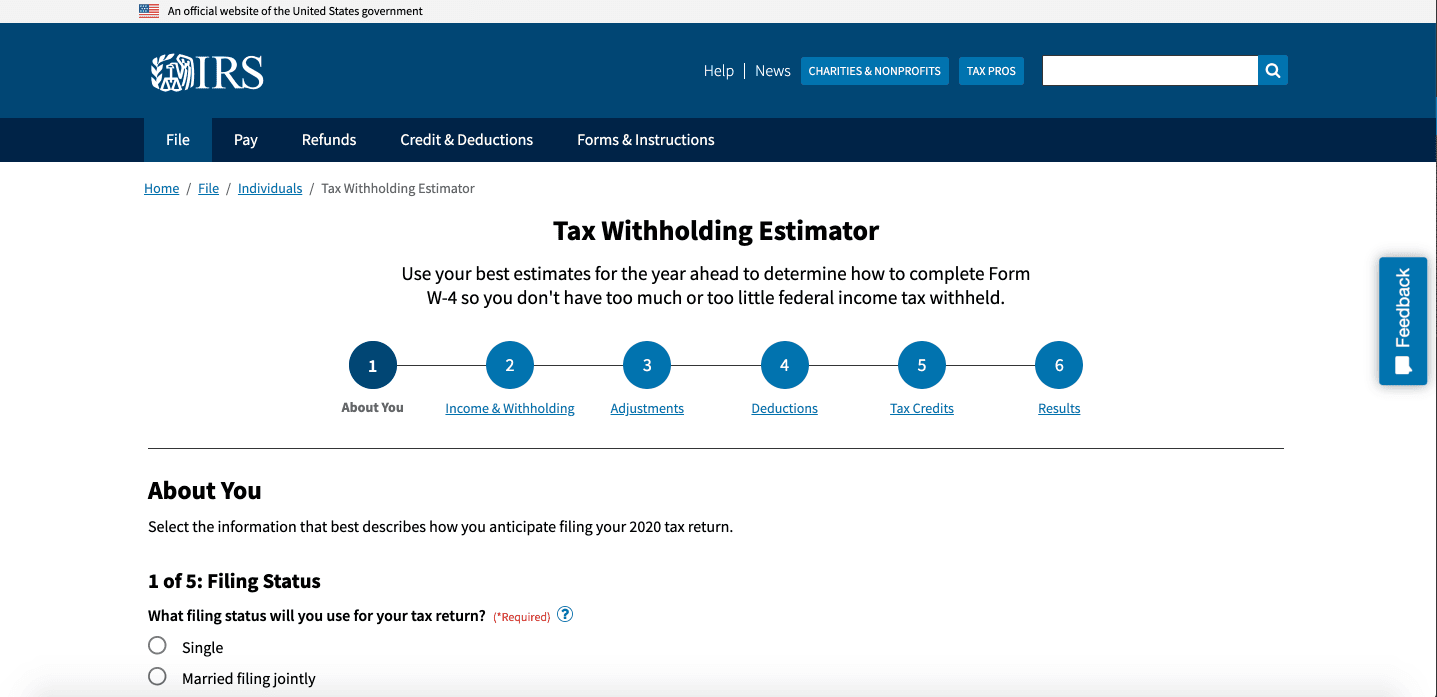
Enter your income and withholding for each job that you and your spouse have. It’ll also ask how much you have contributed to a tax-deferred retirement plan, including 401(k)s, and any other pre-tax accounts, such as flexible spending accounts.
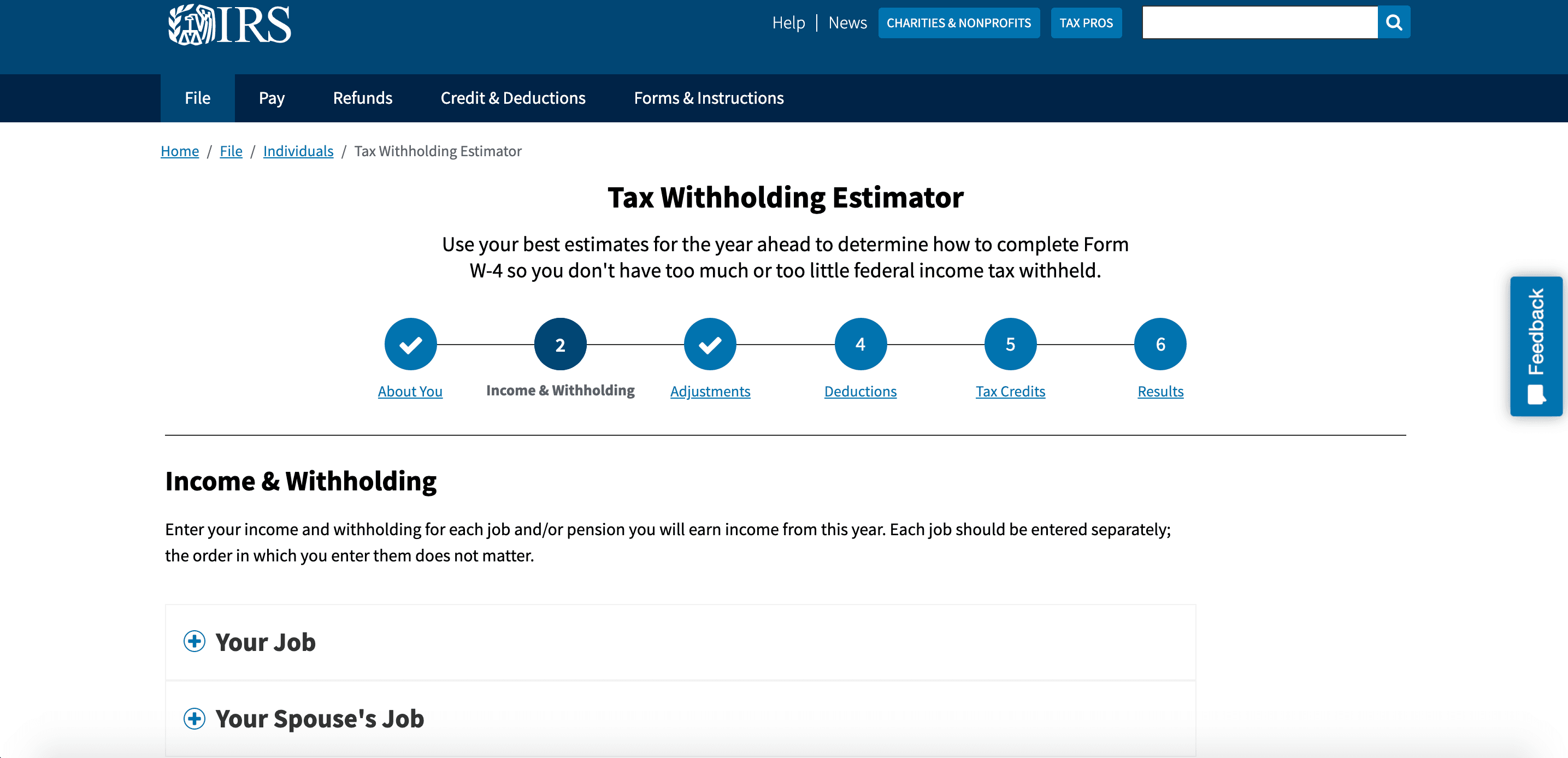
Input any adjustments you qualify for, which may reduce your taxable income. For example, you might enter a student loan interest deduction or alimony payments. Choose the question mark icon for an explanation of each adjustment.
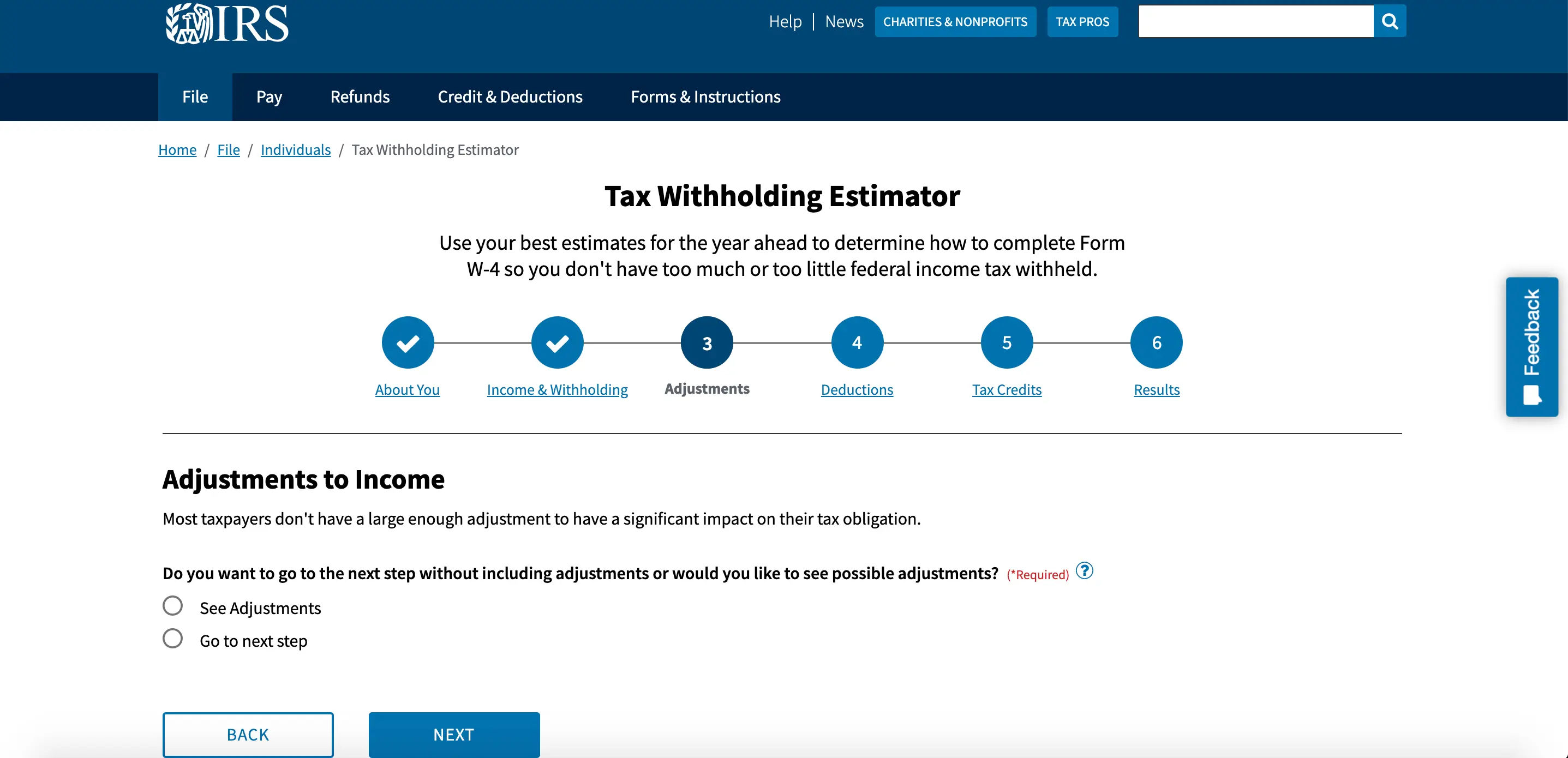
Choose whether to take the standard deduction or if you want to itemize your deductions. If you’re unsure, input your itemized deduction, and the IRS calculator will let you know which one is higher.
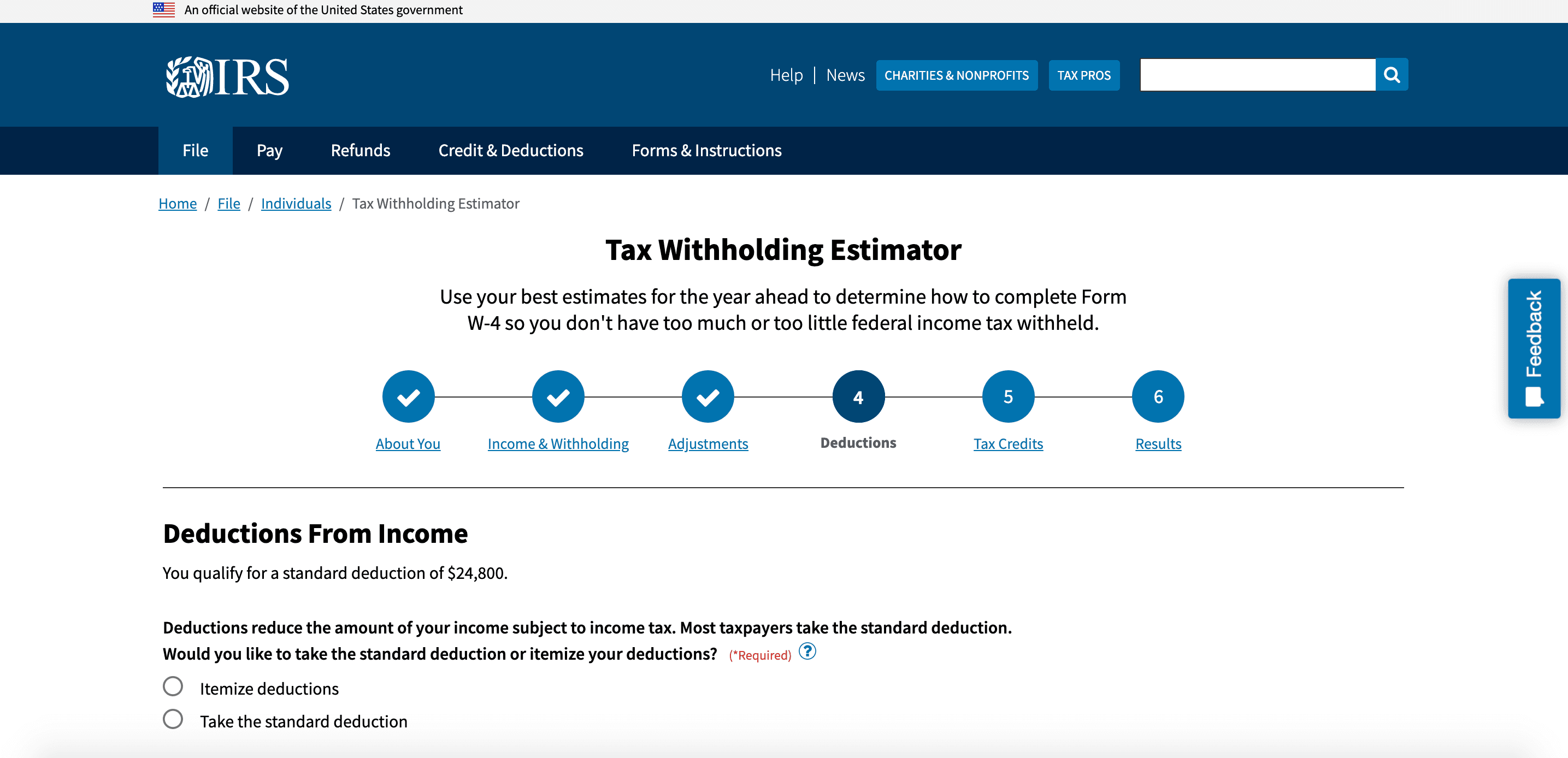
Select any tax credits you’re eligible for, including homeowners who have a Mortgage Interest Credit or parents who qualify for a child tax credit.
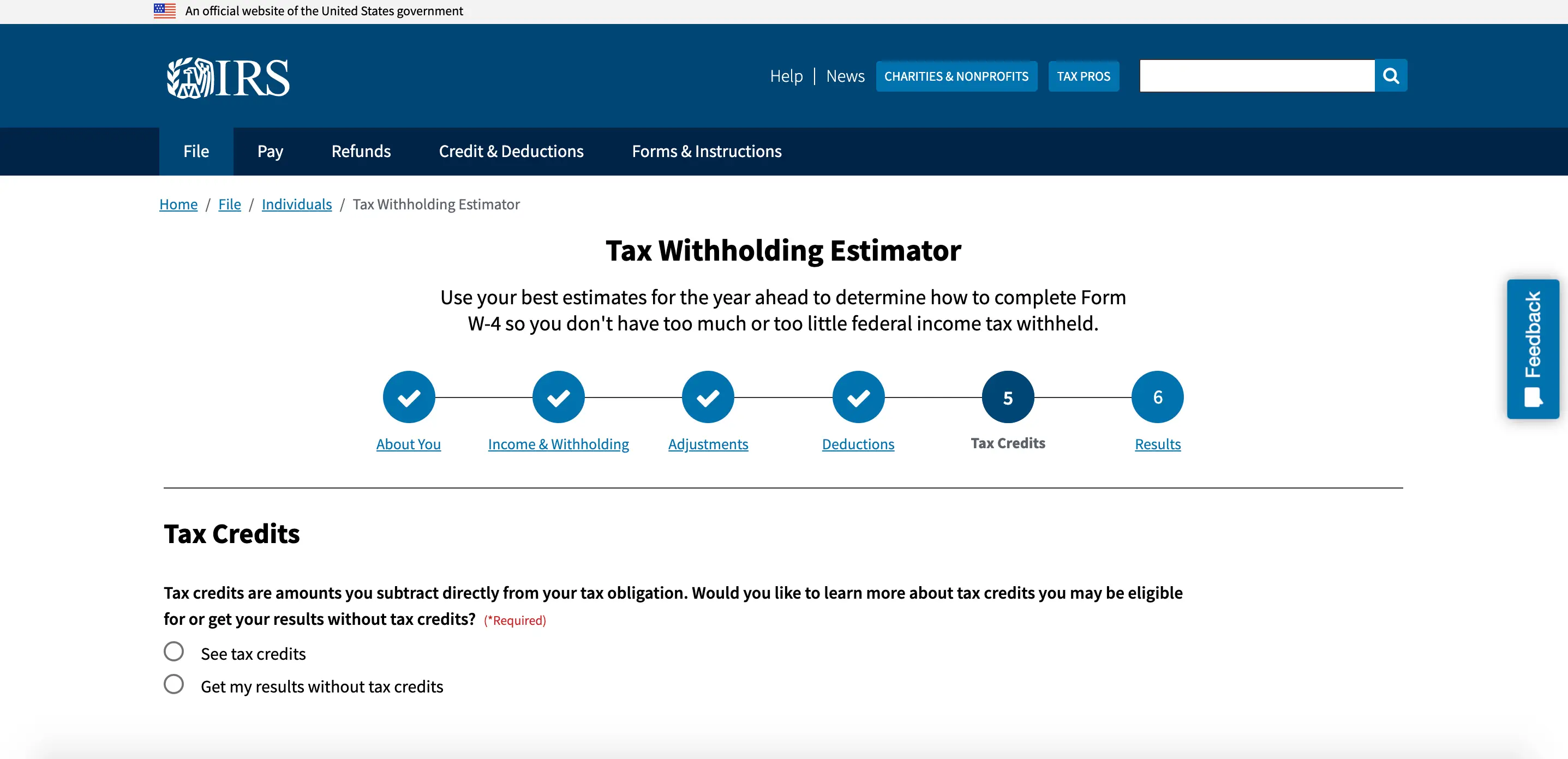
Your results show you what may happen if you don’t change your withholding. Use the slider to pick how much of a tax refund you’d like and follow the steps after to adjust your tax withholding.
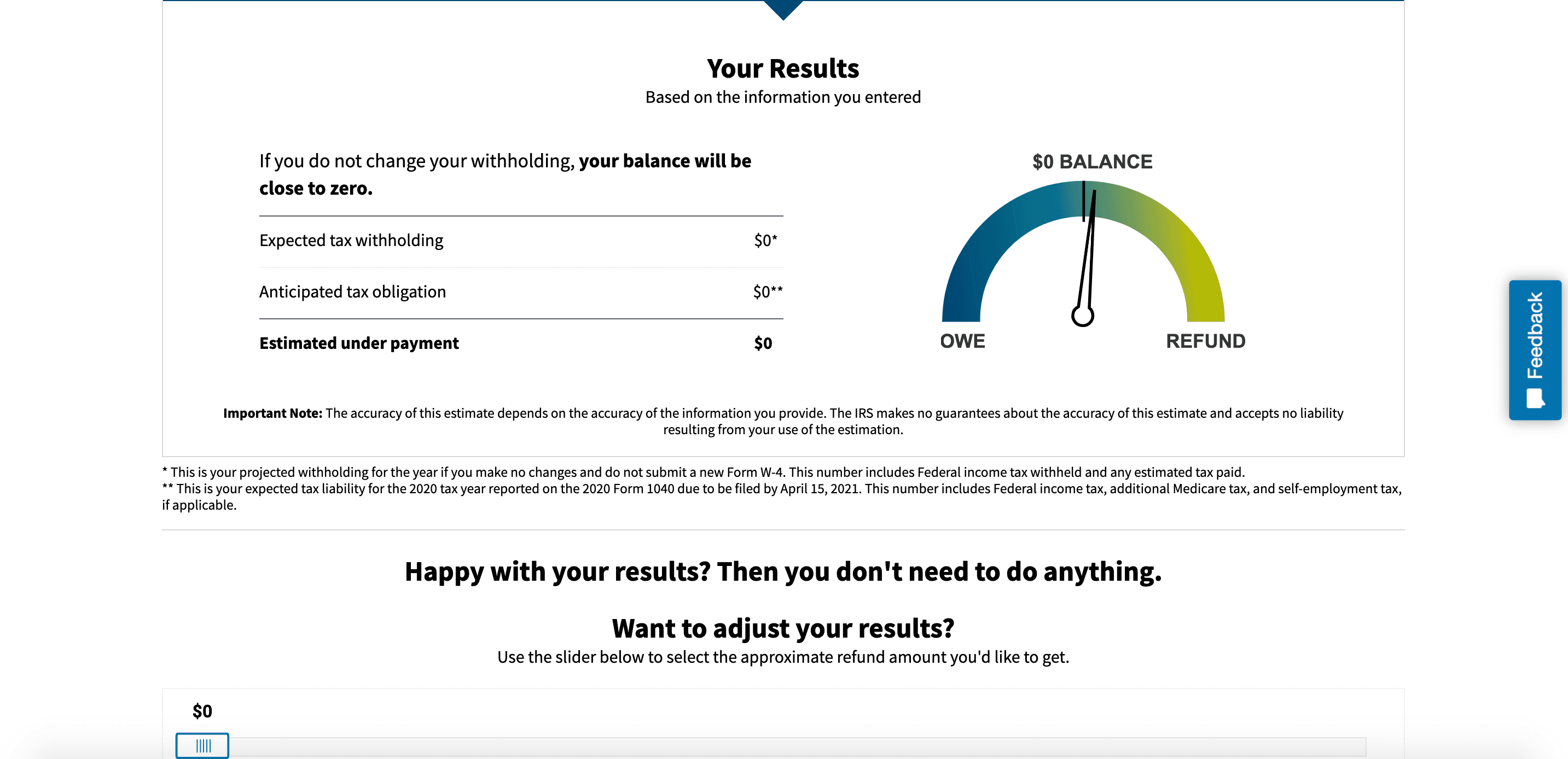
Follow the instructions under How to Adjust Your Withholding to fill out the W-4 or W-4P to change your tax withholding and achieve your refund goal.
Give the new W-4 form to your boss. The W-4P form goes to the company in charge of your pension or annuity. These tax forms don’t go to the IRS.
You’ll generally see your W-4 changes within a month after you submit your form. Some employers may process and apply your withholdings changes even earlier.
Adjusting your tax withholdings so that it’s more accurate means more money for you now to spend or invest. Check out the best tax software to help estimate and prepare your return.
Find answers to even more of your tax-withholding questions here.
You submit a W-4 form to your employer to tell them how much tax to withhold from your paycheck. You receive a W-2 form from your employer summarizing your annual income and taxes for the year.
Independent contractors get Form 1099-MISC instead of a W-2. No federal taxes are withheld from your pay.
No, although the calculator includes the additional Medicare tax that some people with high incomes pay, the estimator and W-4 form do not address the FICA or Medicare taxes.
Maximize your tax savings by having this 1099 expense tracker categorize business purchases for you.
You could cut your tax bill by up to $7,500 with this credit.
Jackson Hewitt is a tax preparation service that lets you file simple returns online or more complex returns for a flat $25.
You need only $12.95 to file federal and state returns with this software.
Here are some rules around what you can claim in your tax return. See our checklist here and know what receipts you need to keep.
Tax breaks for US expats selling foreign real estate exist if you know where to look.
Find out if you classify as a 1099 employee, what it means to be 1099 and what it takes to stay on the level with the IRS.
H&R Block offers easy-to-use, quality tax filing services backed up by accuracy and maximum refund guarantees.
TurboTax is DIY tax preparation software with professional support so you can do your own taxes accurately, quickly, and affordably.